How to Keep Silver from Tarnishing
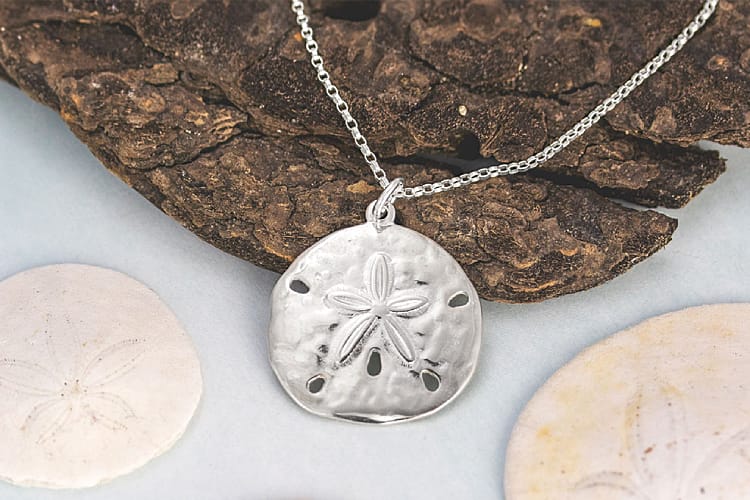
Avoiding tarnish on your silver jewelry findings makes maintenance, cleaning and polishing easier. Learn how to store your jewelry and limit exposure to tarnish inducing environmental factors.
The most common question we receive from clients is how to keep sterling silver from tarnishing. Tarnish is unfortunately inevitable and all sterling will tarnish sooner or later. However, we can offer many tips on how to keep sterling silver jewelry shiny for as long as possible.
Why does silver tarnish?
The most important thing in avoiding silver tarnish is understanding what causes it. Sterling silver reacts with sulfates in the air and in many common materials that may be near your jewelry items. Air born sulfates exist everywhere but are particularly concentrated in industrial areas and coastal regions. Tap water and naturally occurring water both contain varying sulfate levels. Common household items such as papers, plastics, and cleaning or beauty products also contain sulfur compounds that will accelerate tarnish.
7 Common Tarnishing Culprits
1. Beauty products
Hairsprays, shampoos, lotions, and perfumes are all laden with sulfates. The airborne particulates or residue on your hands will tarnish silver. Do not store your silver in your bathroom or vanity area. Do not handle jewelry with make-up or lotion on your hands. And keep jewelry out of beauty and nail salons that are pungent with product fumes.
2. Printed papers
Tissue paper, newspaper and many of those cute printed craft papers often use acid-based sulfur dyes. Yikes! Don’t package your jewelry with these seemingly innocuous fillers.
3. Exhaust
Car, airplane, and machine diesel exhaust have a lot of sulfate particulates. Don’t store your metals in a garage or leave them in the trunk of your car.
4. Rubber
This ubiquitous material is processed with sulfur and has a concentrated residue that accumulates on its surface. Rubber seals, rubber bands and some rubberized plastic solids will leach sulfur into the air.
5. Leather
Popular leather cords & straps used in jewelry making are tanned, just like all leathers, using sulfur-based acids. Store leather separately from your metals. Store leather necklaces with silver finding ends along with silver saver tabs to prevent blackening.
6. Cellophane
That crinkly clear plastic used for food packaging, gift baskets, and other applications is full of sulfur. This plastic is often used to make fold and seal baggies sold for retail packaging hang tags.
7. Smoke
Fireplace smoke near your jewelry can be an issue. Make sure that chimney stays clear so smoke does not fill your home.
Check your storage conditions
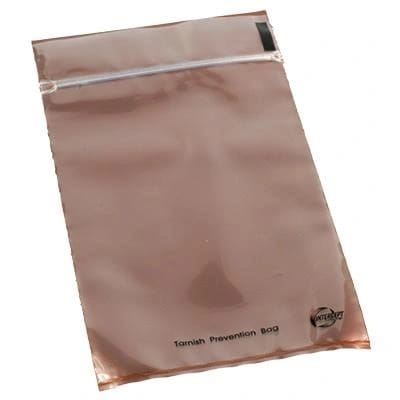
Make sure your storage system is helping to prevent silver tarnish rather than accelerating it. Crinkly plastic bags, as well as rubber or plastic bins such as Tupperware type containers, are very high in sulfates. If you are storing your silver jewelry supplies in many common craft storage units you may actually be accelerating tarnish. Keep your silver findings in an enclosed, dry space. It also helps to store findings in anti-tarnish bags and/or add silver saver tabs or silicone packets to remove humidity and moisture from your storage space.
Remove tarnish-causing items
Printed newspaper, dyed tissue paper, perfumes, open liver of sulfur containers and many types of aerosol products contain sulfates that will tarnish yoursterling silver jewelry supplies nearby. Remove these items from your studio space or storage area.
Keep cleaning supplies handy
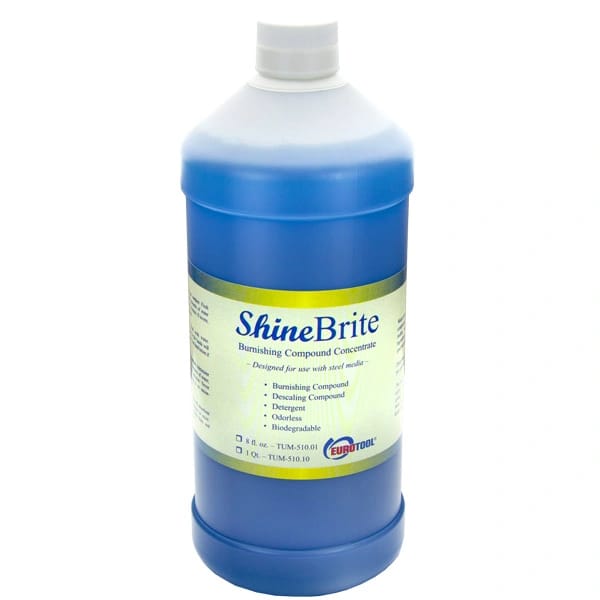
Silver cleaning supplies are inexpensive, easy to use and readily available. Keep a treated cleaning cloth within reach in your work area. A quick wipe will remove tarnish from most items. Anti-tarnish dip cleaners and other solutions are available according to your preference. Tarnish cleaning products are usually safe on most metal items but can damage some stones and pearls.
Consider anti-tarnish alloys
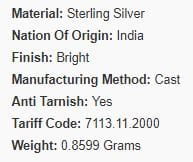
Some findings are anti-tarnish treated, like item S1296.
Certain silver alloys are naturally less likely to tarnish. For example, Argentium or TruSilver are silver alloys with a high tarnish resistance due to a slightly different chemical makeup. These alloys are considerably more expensive than sterling, but they do offer extra protection against tarnishing. Some findings may also come with anti-tarnish treatments that will help delay the onset of tarnishing. Some common industry treatments include spray-on anti-tarnish treatment, flash plating, e-coating, or wax tub tumbling. These treatments vary in efficacy and durability and will increase the variance in tarnish time when comparing across different silver items.
Educate your customers
Make sure to pass on tips for preventing silver tarnish to your customers. They usually appreciate package inserts describing tarnish prevention and silver jewelry cleaning instructions. The best advice you can give clients is the “last on, first off rule.” Men and women should make sure the jewelry is the last thing they put on before leaving the house – after they have dressed and applied lotions, cosmetics, and hair care products. It should also be the first thing they take off when they get home before washing with soap, cooking, cleaning or bathing. Do not wear silver jewelry to nail salons, automotive service centers or other locations with high levels of sulfate fumes.
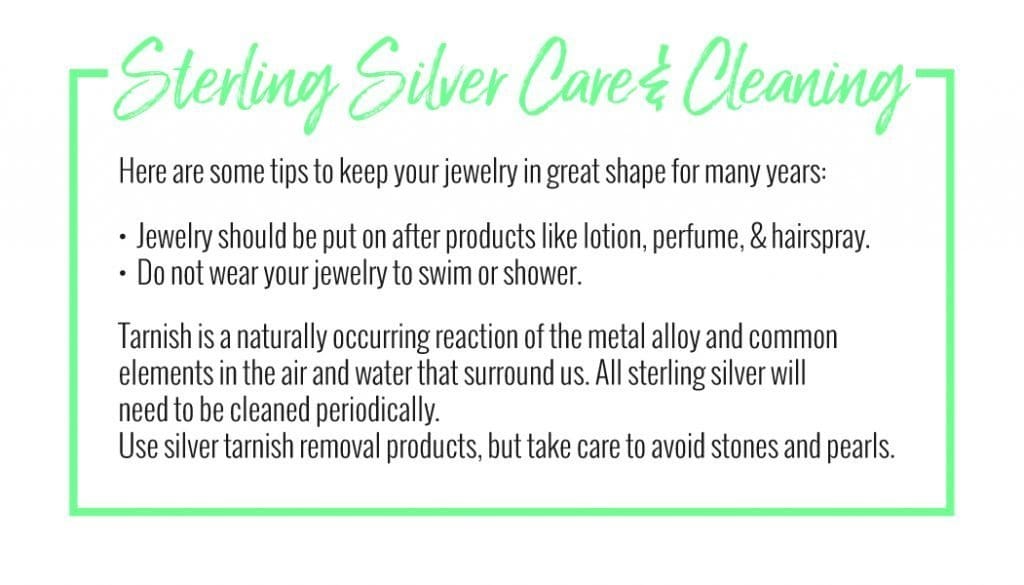
It is important to remember that all sterling silver is not the same. Even when you store items under identical conditions you will find that some pieces tarnish faster than others. You do not always know the history of the items before you received them. The time they spent on the shelf, their exposure to fumes in transit and other variables may play a role before items arrive in your hands.
Source: Halstead